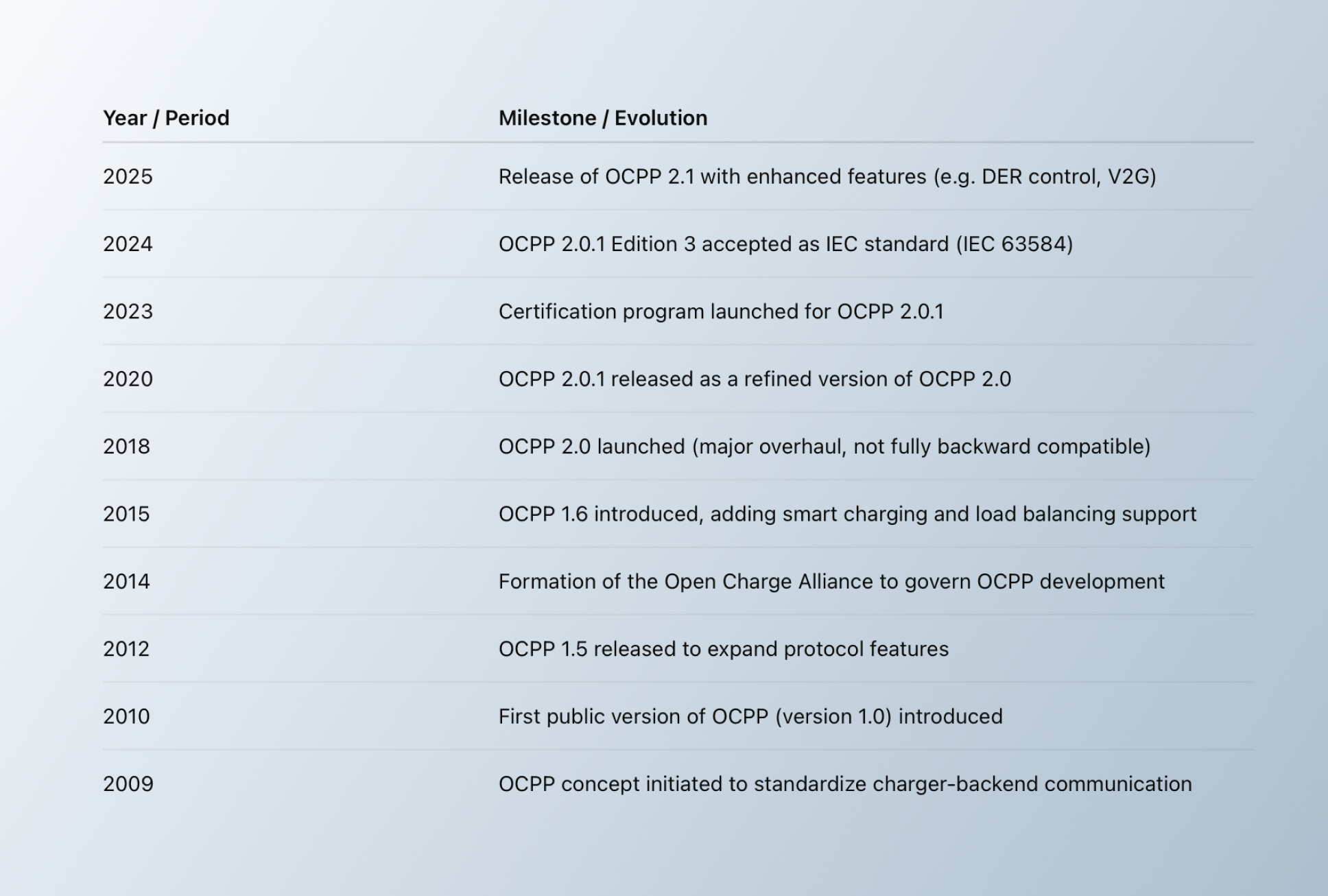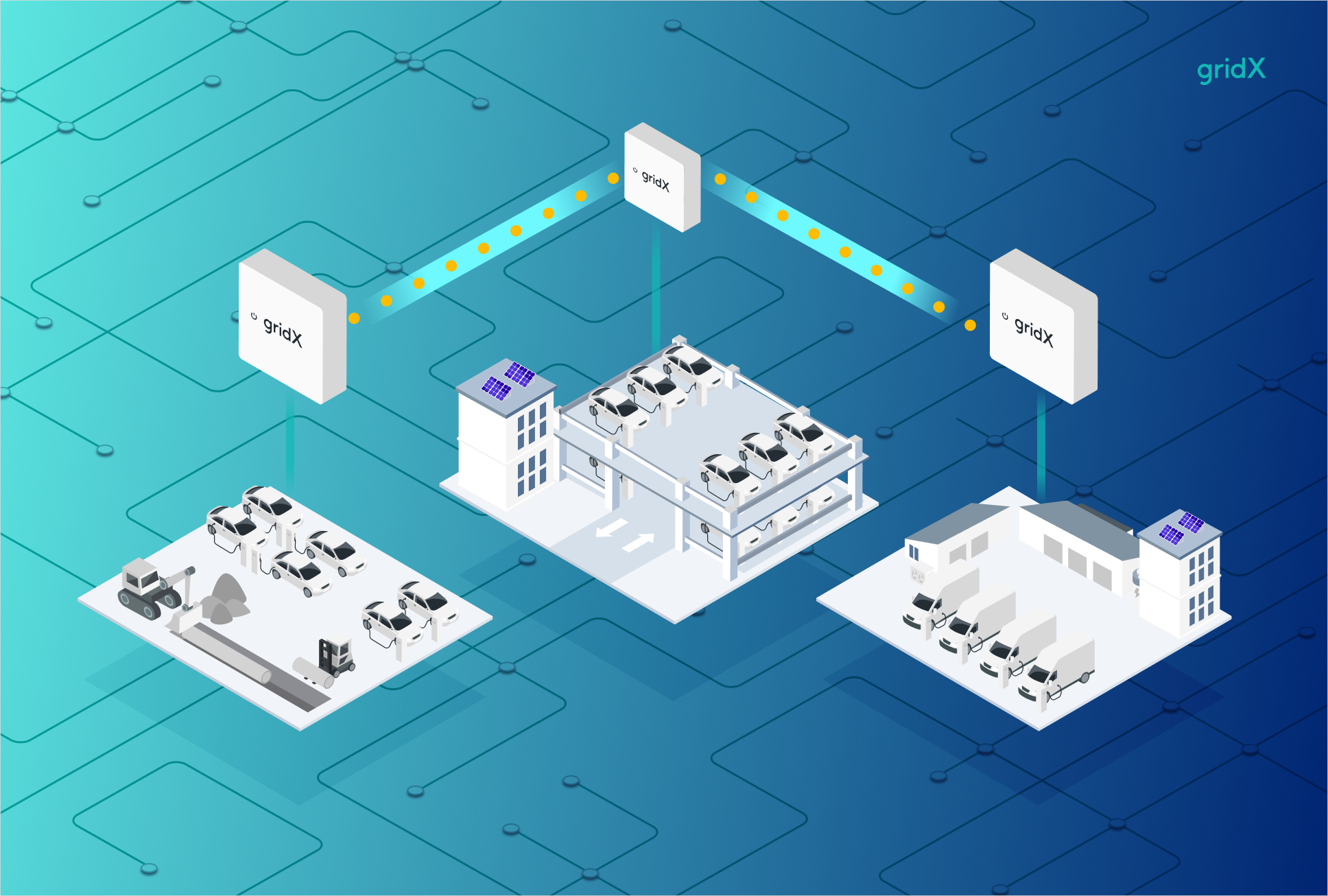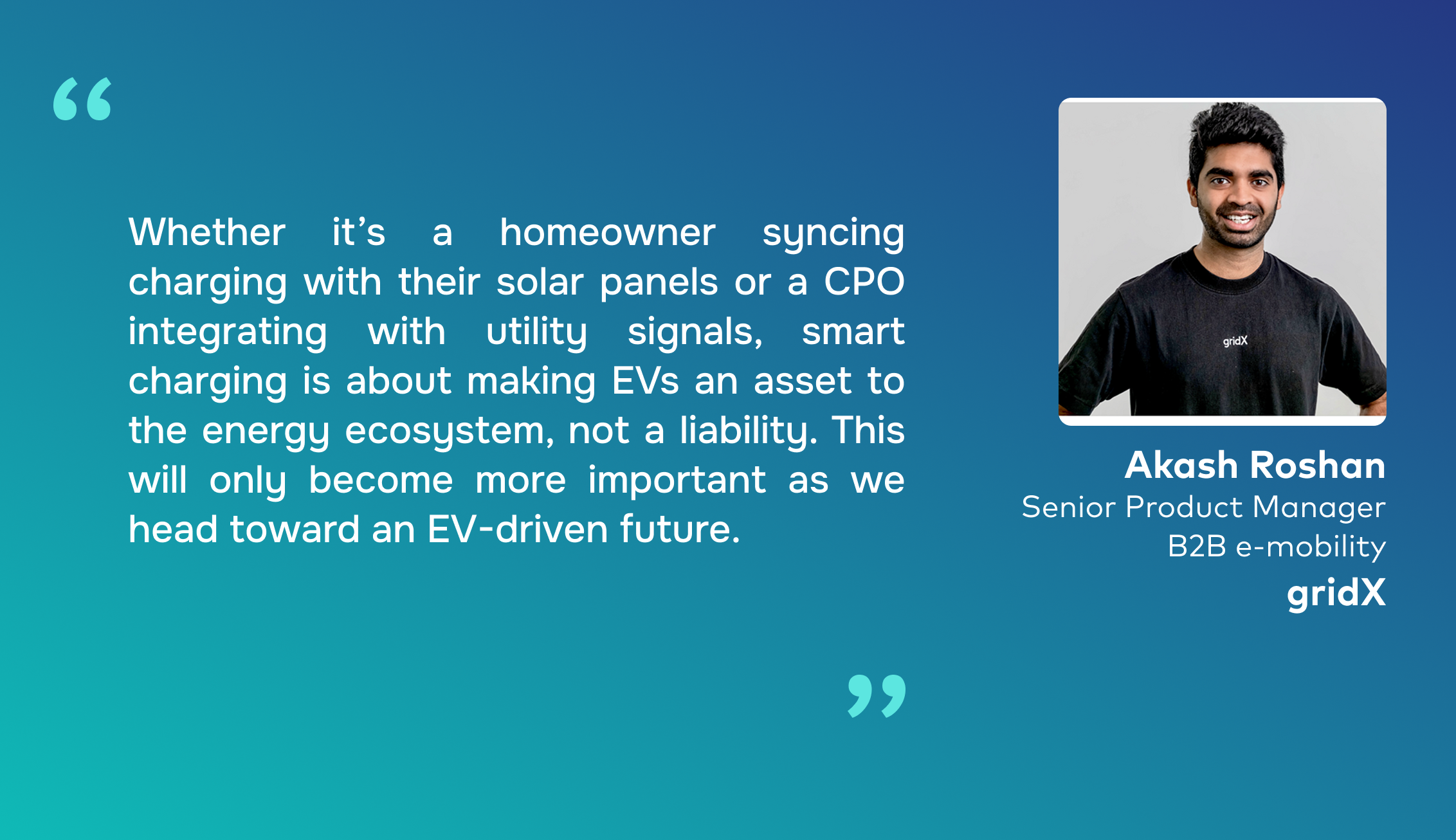What is a charge point management system?
A charge point management system (CPMS) is the backend software platform that connects and controls a network of electric vehicle charging stations (EVCS). It is the digital backbone for charge point operators (CPOs) and other fleet operators, handling everything from real-time monitoring and maintenance to user authentication and billing. In practice, a CPMS enables operators to see the status of each charger, start or stop charging sessions remotely, collect usage data and ensure the network runs smoothly for electric vehicle (EV) drivers.
How charge point management system evolved into smart charging system
Traditional charge point management systems (CPMS) were built for basic network control: keeping chargers online, processing payments and managing user access. These early systems had limited scope and often lacked interoperability, especially across brands or between AC and DC hardware.
As charging networks scaled and grid constraints grew, charge point operators (CPOs) needed more. And that’s where energy management systems (EMS) came into play. EMS added the intelligence to coordinate chargers, storage, on-site generation and load control. They enabled operators to optimize energy usage, avoid costly grid upgrades and respond to dynamic conditions.
Over time, CPMS evolved to incorporate EMS capabilities. Modern CPMS now communicate using open standards like Open Charge Point Protocol (OCPP), support cloud connectivity and local gateway control and integrate load management, optimal scheduling and energy coordination, effectively serving as a unified smart charging management system.
Below is a reverse timeline tracing how CPMS and EMS capabilities have evolved over time:

What makes charging “smart”?
A smart charging management system builds on a traditional charge point management system by adding intelligence to how and when EVs charge. Rather than charging every vehicle immediately at full power, a smart system can modulate charging in response to various factors – for example, delaying or throttling charging based on grid load, dynamically balancing power among multiple EVs or timing charging to when electricity is cheaper. In other words, smart charging aligns EV energy consumption with supply and demand conditions, instead of simply focusing on recharging the battery as fast as possible.
Communication is key: in a smart setup, the EV, the charger and the management platform continuously share data. This three-way communication – often enabled by protocols like OCPP and others – allows the system to adjust charging behavior in real time to reflect grid status, on-site generation or cost signals.
Smart charging combines real-world use cases and enabling features, illustrating both how and why intelligent control delivers value. Each section links the operational goal with the underlying technology that makes it work.
Load management, dynamic control and peak shaving
Load management adjusts charging loads to stay within local electrical limits, preventing overloads and ensuring fair power distribution among vehicles. Dynamic load management (DLM) automates this by redistributing available power across all charge points, dynamically throttling output when total demand nears capacity.
Peak shaving complements this by limiting maximum power draw to avoid demand charges on commercial sites. The system monitors total site load and temporarily reduces charging power during high-demand moments. This keeps costs predictable, avoids fuse trips and often eliminates the need for expensive grid upgrades, all while ensuring that EVs still receive enough charge based on configured priorities.
Demand response: DSO signaling and dynamic tariff optimization
Demand response involves adjusting charging based on external signals, such as electricity prices or grid control inputs. Smart charging systems enable this through time-of-use, which follows fixed off-peak pricing windows and dynamic tariff optimization, which responds to real-time price fluctuations or day-ahead market signals to minimize energy costs. In contrast, DSO signaling triggers adjustments based on grid operator instructions — for example, temporarily reducing charging power to prevent local congestion or maintain grid stability. By combining these capabilities, the system both cuts costs and supports a more resilient energy network.
Virtual grid expansion (VGE)

Energy integration links EV charging with on-site renewable generation or storage. It coordinates how charging interacts with PV systems, batteries, grid conditions and market signals to use stored or generated energy at the most optimal times. When solar power is abundant, charging ramps up; when output dips, charging slows or switches to stored energy.
This makes EV charging part of a site’s overall energy optimization and contributes to virtual grid expansion (VGE) by maximizing existing capacity instead of relying on physical upgrades, as demonstrated in a project with E.ON Drive, where large-scale batteries enabled a Danish furniture manufacturer to overcome grid constraints.
By discharging stored energy only when total consumption reached the grid limit, the system virtually expanded available capacity, reducing energy costs by 26%, increasing charging speed by 40% and avoiding more than €50,000 in grid upgrade expenses.
User management, prioritization and billing
Smart charging platforms authenticate users, track sessions and apply tariffs automatically. Prioritization and scheduling features let operators decide who charges first – by urgency, customer type or time of arrival. Billing tools then record energy consumption and apply appropriate rates, supporting flexible models like free employee charging or pay-per-use for visitors.
Remote monitoring, security and reliability
Connected chargers allow remote supervision through dashboards or apps. Operators can start or stop sessions, adjust settings and receive fault alerts in real time. Security and reliability features, such as encryption, authentication and local fallback control, ensure uptime even if the cloud connection drops.
Bi-directional charging and open standards
Vehicle-to-grid (V2G) and vehicle-to-home (V2H) technologies let EVs discharge energy back to the grid or building. Smart charging systems prepared for these scenarios rely on open standards like ISO 15118 and OCPP, ensuring interoperability between vehicles, chargers and back-end software. Though still emerging, V2G-ready systems represent the next evolution of intelligent energy management.
Benefits of smart charging for CPOs and public network
Smart charging management systems deliver economic, operational and environmental value for charge point operators, end users and the grid.
Cost savings and improved ROI
Smart charging lowers both installation and operating costs. By avoiding grid upgrades and managing peak loads, upfront investments can drop sharply — sometimes by as much as €50,000 in avoided grid expansion costs. Shifting charging to off-peak hours can also reduce electricity bills by up to 30%, further improving profitability.
Maximized use of existing grid capacity
Smart charging allows more EVs to use existing electrical infrastructure safely. Instead of expanding physical grid capacity, software balances usage and increases throughput. The “virtual grid expansion” feature lets multiple chargers run simultaneously within site limits using an on site battery optimally. It maximizes utilization of chargers, grid connections and local generation. Each kilowatt of available power delivers more value through coordinated management.

Enhanced reliability and user experience
By adjusting charging in real time, smart systems prevent overloads and outages, keeping sites stable and chargers available. Transparent communication, reservation options and session notifications strengthen driver confidence and improve network performance.
Grid stability and sustainability
Smart charging aligns EV demand with grid needs. Chargers can reduce load during evening peaks or accelerate when renewable supply is high. This flexibility stabilizes the grid, improves renewable integration and cuts carbon emissions. Future vehicle-to-grid models will enhance this, allowing EVs to support the grid during demand spikes. Smart charging already acts as distributed energy storage that strengthens energy systems.
Regulatory compliance and incentives
Governments increasingly require or reward advanced smart charging capabilities — not just at homes, but for public charging networks and this has direct implications for CPOs. For example, under the EU’s Alternative Fuels Infrastructure Regulation (AFIR), from April 2024, publicly accessible charging stations with 50 kW or more must allow ad-hoc payment (e.g. via credit/debit card) and set prices based on kWh with transparent, non-discriminatory tariffs. Older high-power chargers must also be retrofitted by 2027.
These rules push CPOs to adopt hardware and software that support full interoperability, smart charging, remote updates and compliance or face retrofitting costs or regulatory noncompliance. At the same time, incentives – though more common in residential programs – still matter: subsidies or rebates for infrastructure expansion and smart charging help reduce CAPEX and accelerate deployment.
More EVs on the road means more charging demand, which is good for business, but only CPOs with smart, regulatory-ready systems can scale while managing costs, meeting regulatory standards and leveraging future grid services.
Expert insight: The road ahead
The evolution from traditional charge point management systems to modern smart charging management systems reflects how the industry is shifting from basic network operation to intelligent, data-driven energy optimization.
According to Akash Roshan – Senior Product Manager of B2B e-mobility – each and every charging site operator and business is looking to reduce their operating costs. With energy expenses being one of the highest operational expenditure factors, investing in a smart charging system is a no-brainer. It saves energy costs and opens new revenue streams over time. Still, some operators hesitate, assuming that adding intelligent control will make things more complex. Akash explains, “In reality, it’s the opposite. A well-implemented smart charging system simplifies energy management and cuts costs. We’ve seen clients unlock major savings by avoiding grid upgrades and shaving peak loads, with some realizing up to €50,000 in upfront savings from avoided grid expansion while still expanding their charging networks,” he says.

As the capabilities of charge point management systems expand beyond monitoring and billing, smart charging management systems now leverage data and automation to unlock far greater value. Akash notes that using data-driven charging strategies can enable operators to install significantly more charge points than they originally thought possible on a given site.
“Starting with dynamic load management to efficiently connect and operate more EV chargers at your site, you can unlock even greater value through a comprehensive suite of smart charging functionalities. These features optimize the EV charging and other energy assets such as PVs and batteries based on various optimization goals ranging from peak shaving and dynamic tariff optimization to flexibility trading and more. All of this happens seamlessly in the background while ensuring a smooth, reliable and a great EV charging experience for the EV driver,” Akash explains.
He also highlights the growing integration of EV charging with renewable energy and grids: “Whether it’s a homeowner syncing charging with their solar panels or a CPO integrating with utility signals, smart charging is about making EVs an asset to the energy ecosystem, not a liability. This will only become more important as we head toward an EV-driven future.”
The insight here is clear: operators that move beyond traditional charge point management systems and adopt smart charging management systems early will be the ones to scale efficiently, remain compliant and stay competitive. In Akash’s words, “Smart charging isn’t a luxury anymore. It’s the foundation for sustainable, efficient growth in e-mobility.”



